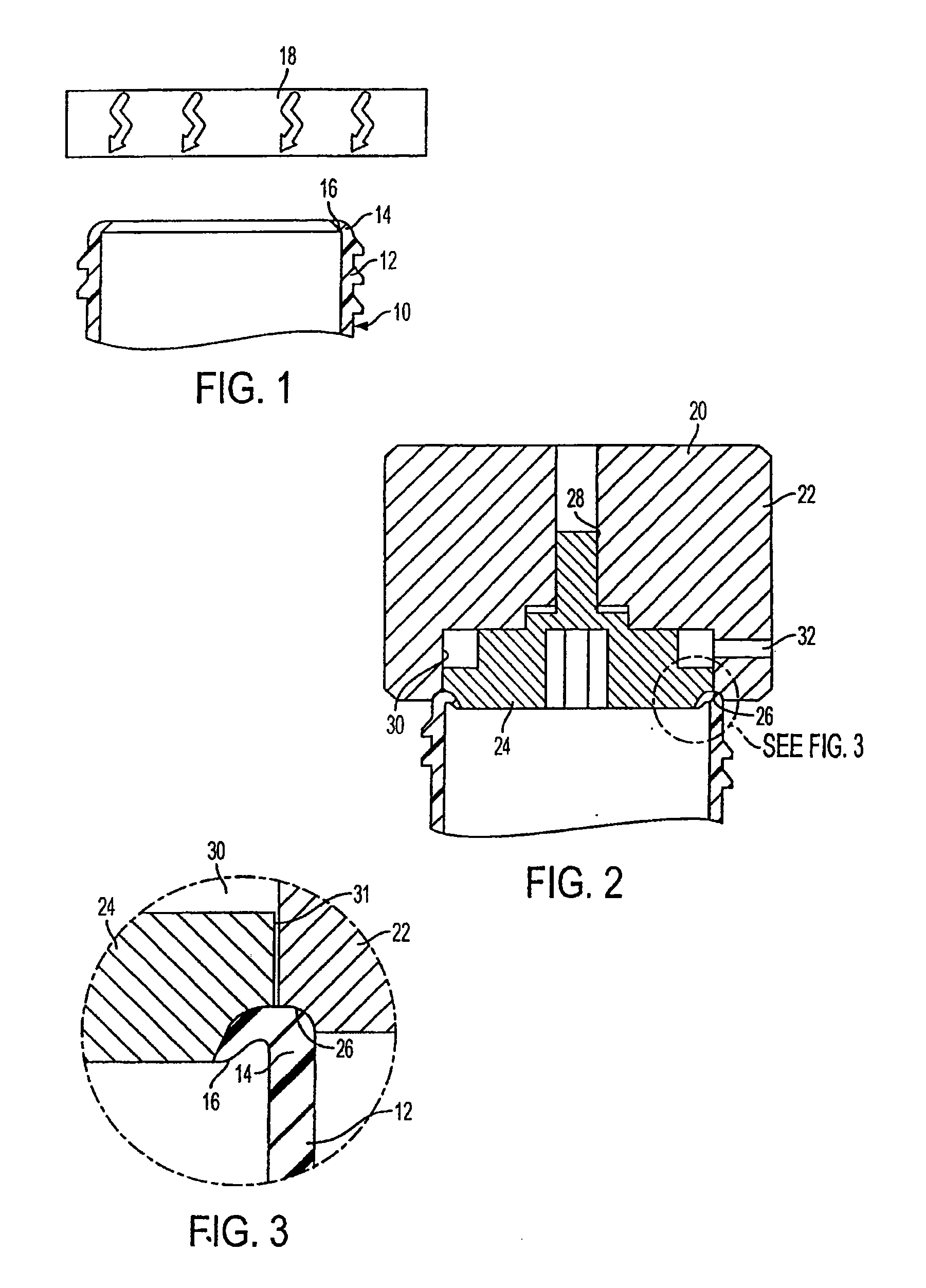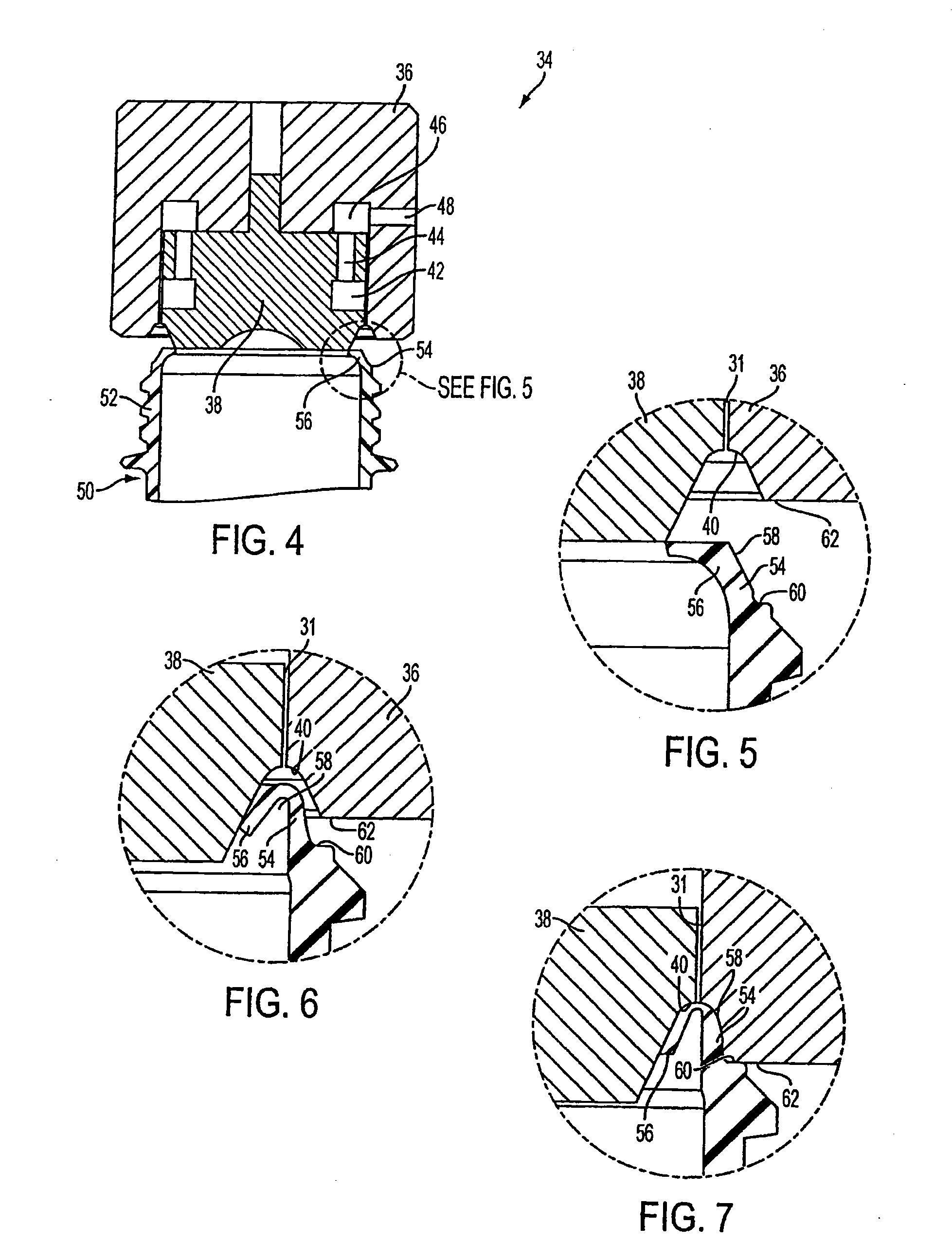Method for reforming a portion of a plastic container to include a transferable element, and the resulting container
a technology of extrusion blow molding and plastic containers, which is applied in the direction of packaging, turning machine accessories, drawing profiling tools, etc., can solve the problems of reducing the tendency of the heated portion to stick to the tool, etc., to enhance sealing engagement, eliminate manufacturing imperfections, and add to the aesthetic
- Summary
- Abstract
- Description
- Claims
- Application Information
AI Technical Summary
Benefits of technology
Problems solved by technology
Method used
Image
Examples
Embodiment Construction
[0031]FIGS. 1-3 illustrate a method and apparatus for reforming a portion of a plastic container such as, for example, the end sealing surface of a plastic container neck finish in accordance with an exemplary embodiment of the present invention. Referring to FIG. 1, a plastic container 10 includes a neck finish 12 with an end portion 14 that includes a radially inwardly and axially upwardly extending flange 16. (Directional words such as “upwardly” and “downwardly” are employed by way of description and not limitation with respect to the orientation of the apparatus and the containers illustrated in the drawings. Directional words such as “axial” and “radial” are employed by way of description and not limitation with respect to the axis of the container finish or the reforming tool as appropriate.) Flange 16 is typically formed by a trimming operation after extrusion blow molding, for example, in which container 10 is severed from a moil or the like. Flange 16, as initially formed,...
PUM
| Property | Measurement | Unit |
|---|---|---|
| radial width | aaaaa | aaaaa |
| temperature | aaaaa | aaaaa |
| temperature | aaaaa | aaaaa |
Abstract
Description
Claims
Application Information
 Login to View More
Login to View More - R&D
- Intellectual Property
- Life Sciences
- Materials
- Tech Scout
- Unparalleled Data Quality
- Higher Quality Content
- 60% Fewer Hallucinations
Browse by: Latest US Patents, China's latest patents, Technical Efficacy Thesaurus, Application Domain, Technology Topic, Popular Technical Reports.
© 2025 PatSnap. All rights reserved.Legal|Privacy policy|Modern Slavery Act Transparency Statement|Sitemap|About US| Contact US: help@patsnap.com



